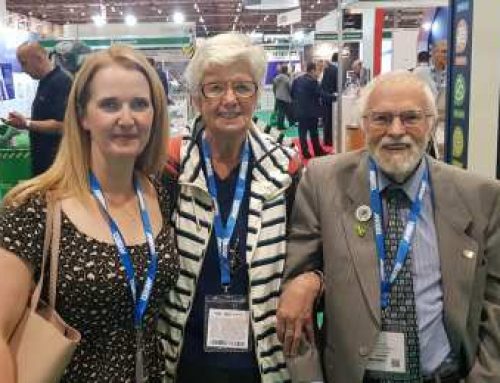![]()
I havent written a blog for some time as we have been catching up on things around the house. The garden looks back to normal and looking good with all the new flowers popping back up. if only we could change our seasons and have new bodies every year.
Ray decorated the bathroom so that looks very nice.
We got ready to go to Essex for The Beacon International Ride through England from Washington to Thurrock calling at each factory on the way down to raise money for the MNF https://mydonate.bt.com/fundraisers/mavisnye-cyclechallenge?fbclid=IwAR1JkdDnQU9J1EuvCxsEoDy8GbTwFHqy2K20VabRSorq_nCB_poy85brcnE
We want to help raise as much money as possible to help the Mavis Nye Foundation continue with its working in developing treatments and finding a cure for mesothelioma.
Please give generously and you are welcome to cycle all or part of the route with us and ask your friends and family to sponsor you too.
Mavis Nye Beacon Cycle Challenge
After a visit to our factory from Mavis and Ray Nye, our staff were inspired to do something to help raise money for Mavis’s fantastic charity.
We have a team of cyclist who will be embarking on a gruelling challenge to help raise as much money as possible for the Mavis Nye foundation and also help raise awareness about mesothelioma and other lung diseases.
We plan to set of from our most Northerly depot in Washington in Tyne and Wear, we’ll cycle down to our Leeds depot on day one. The next day we’ll set off from Leeds down to our central office and headquarters in Desborough in Northamptonshire. On the third and final day we’ll set off from Desborough down to our most Southerly office in West Thurrock just outside London.
The whole trip will be in excess of 350 miles, Mavis and Ray Nye will be waiting at out final location to receive our cyclist as they finish their mammoth journey.
Please give generously to this amazing charity which has done wonders for developing treatments for mesothelioma suffers.
Event date
29-May-2019 00:00 –
31-May-2019 00:00
Event type
Cycling
Event is completed
Louis came and picked us up and we had a good clear run across the Dartford Crossing to the depot at Thurrock where we sat in the office to wait for the 12pm arrival. It is 20 years since ray and I had sat in a working office and it bought back lots of memories of our working together in the Fire Alarm industry.
Happy days x
At 12 we were down stairs and the riders appeared around the corner and the fun began




Beacon International propose a revolutionary game
Beacon International propose a revolutionary game changer for the Licensed Asbestos Removal Industry
So what are the issues behind this?
Ray’s work has identified that areas within enclosures could be missed by the incoming clean air even though we now have the higher ventilation rates taken from the HSL work which argued that a minimum of 1,000m3/hour created turbulence that resulted in mixing within an enclosure. His argument here is that the tracer gases used by HSL during RR988 simply do not work as a true model for Asbestos fibres. This stratification means fibres remain airborne for a long time and are not removed by existing arrangements meaning fibre levels will increase in some parts of enclosures away from what he terms the “Unidirectional zone” (see figure below). In addition fibres will stick to the walls which mean a higher risk of generating fibres during enclosure dismantling as well as having these still present where operatives are working.
Another problem is the level of particles coming into an enclosure in the first place. The current method of drawing large volumes of air in from outside the enclosure also means large volumes of dust particles are drawn into the working enclosure where more particles are added in the form of Asbestos fibres. The general dust loading can cause problems with air testing as any analyst with an occluded filter will testify to.
The solution?
Ray has proposed a completely new style air inlet that disperses the incoming air around the edges of an enclosure to maximise the unidirectional zone and, thanks to the Coanda effect (a flow of air sticks to a surface it passes over, following curves), it scrubs enclosure surfaces clean and minimises the settling of fibres.
This airflow inlet cannot be taken from a traditional airlock but here Ray has proposed an alternative that is commonly used on the continent which is, in essence, a 3 stage modular shower unit minus the shower with proper closing doors.
The next part is truly groundbreaking and overcomes the issue of pulling in large quantities of particles into the enclosure: the recirculation of NPU exhaust back into this new style air inlet in an almost closed cycle. Ducting attached to your NPU exhaust is channelled back round to these air inlets with only a small additional volume being drawn in each cycle (to create the pressure differential) and the same volume therefore being exhausted out of the cycle.
This recirculating also allows for a massive increase in the number of Air Changes per Hour (ACH) without creating a massive pressure differential that would increase the strain on enclosure fixings and seals. In addition by scrubbing the air clean through the HEPA filter over and over again at an elevated ACH rate this reduces fibre loading within the working enclosure, likely slashing current personal monitoring values for those undertaking Licensed Asbestos removal work.
Away from asbestos risk the recirculating system can also readily introduce heating or cooling as necessary to help contribute to improved working conditions.
The finished enclosure has a unidirectional zone like this:
Is recirculation a new idea?
According to Ray this was trialled over in America by no less an organisation than Ford but was abandoned as they could not overcome the issue of removing carbon dioxide from the air. Workers generate CO2 as they use up the Oxygen so within an almost sealed environment the CO2 level rises causing workers to slow down and feel tired and sluggish. Ray has overcome this with the addition of bespoke air inlets with a guide to ensure these are sufficient for the number of workers. In addition the smart ventilation controller explained next can have a CO2 level input allowing for this level to be monitored and managed accordingly.
Smart Controller
Beacon Internationals’ new smart ventilation controller controls the system automatically and is an essential component of the re-circulatory system. This has so many functions it’s impossible to list them all here but very briefly it can automatically control any number of NPU’s to ensure whatever pressure differential you require (-5 Pascals minimum) is maintained throughout a project. Data is automatically recorded and sent to the cloud allowing real-time monitoring and management of a job from the comfort of your beach chair. It also takes a large number of sensor inputs including pressure differential, CMH, temperature, gases and even particle counters.
Graham Warren ACAD Manager commented “The BMTA event had a great line up of speakers but the display and talk delivered by Beacon International was the highlight for me. Ray raised a lot of questions and shared his concerns with the audience on a variety of issues and it’s important these are looked into which is something ACAD will help support. It’s fantastic that our industry has such passionate people who are really striving to make a difference, and these latest new ideas from Beacon International really do provide a potential game-changer for us all.”
To find out more about these new products get in touch with Beacon International directly on 01536 762 939 or their website:
Thank you xxx












Leave A Comment